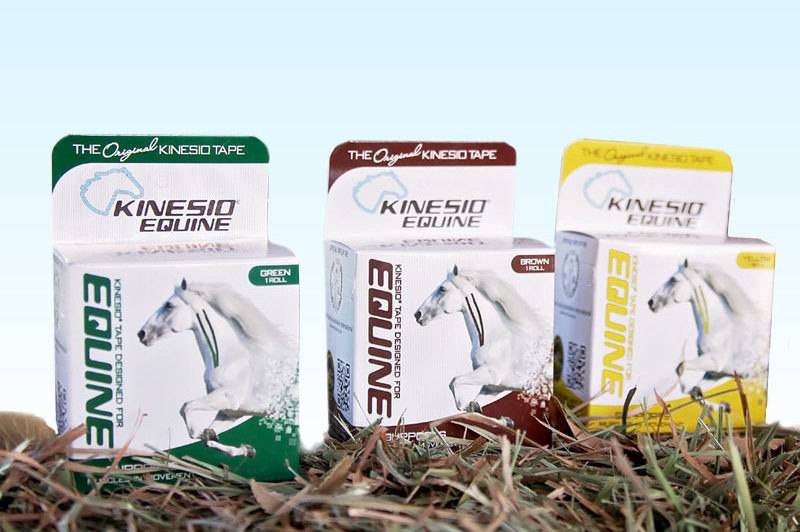Proven for human athletes, elastic therapeutic tape it’s now being developed for horses.
The premise behind elastic therapeutic tape is based on a simple theory. If you can lift the skin away from the underlying muscle a little, fluid can move more freely beneath the skin. This helps keep down inflammation and support the surrounding tissues, while allowing flexibility and range of motion of the various muscles and joints.
The Kinesio Taping Method is backed by more than 35 years of design, research and practice. Along with its well established use in humans, it also helps relieve the everyday ailments found in equine athletes. The new Kinesio Equine Tape utilizes the hair follicles to assist in this process.
Horse owners and vets have asked how well the tape will perform over a thick or shaggy coat. Dr. Kenzo Kase, creator of the original Kinesio Tape and developer of the Kinesio Taping Method, recently completed a series of tapings on rescue horses in New Mexico. As he expected, the animals with lots of hair responded well to the taping. In fact, the equine tape is specifically designed to be used over hair. “When you stimulate the hair, you also stimulate the skin and below the skin,” Dr. Kase says.
“When Dr. Kase applies the tape to an equine patient, you can see right away how much the horse relaxes,” adds Mona Angel, the company’s Equine Project Manager. “The horse almost looks sleepy.” KinesioEquine.com







